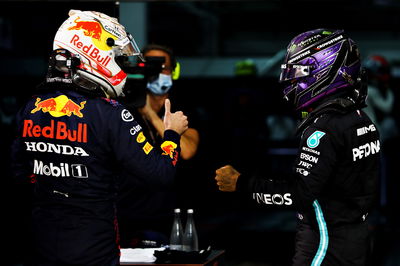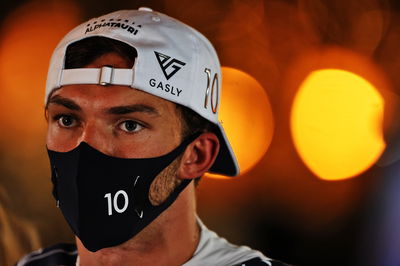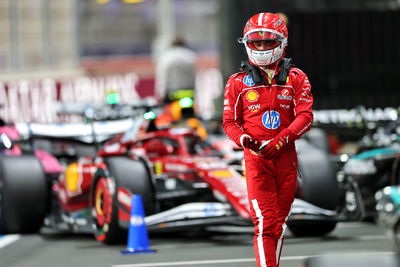How Red Bull turned the tables on Mercedes at F1 Bahrain GP
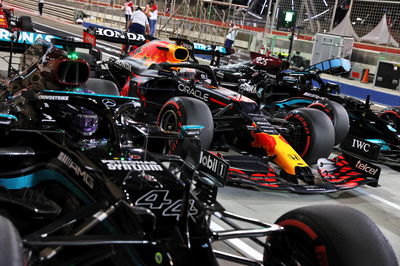
Red Bull has started the 2021 Formula 1 season as the team to beat after qualifying for the Bahrain Grand Prix showed it boasts - for the time being at least - the fastest car on the grid.
Saturday’s result marked the first time in the hybrid era that Mercedes has not taken pole position at the first race of a new season, while it has been eight years since Red Bull last kicked off a campaign at the top.
Red Bull answered the big question from pre-season testing as its form held true with Max Verstappen beating Lewis Hamilton’s Mercedes to pole at the Sakhir circuit by a margin of almost 0.4 seconds, generating a huge buzz of excitement that 2021 could finally be the year we get to see a vintage title fight featuring the sport’s two heavyweight drivers.
But just how has Red Bull managed to turn the tables on Mercedes over a shortened winter where the cars have largely remained the same?
Solving its biggest weakness
Much of Red Bull’s 2020 campaign was hampered by rear instability which made its RB16 an especially skittish car to drive. After devoting the majority of last season to updating its car, it was able to get to the bottom of a wind tunnel correlation issue and address it.
By the end of the year, Red Bull had significantly reduced its gap to the Mercedes squad and finished the season strongly by taking victory at the final race in Abu Dhabi, demonstrating it had made significant progress.
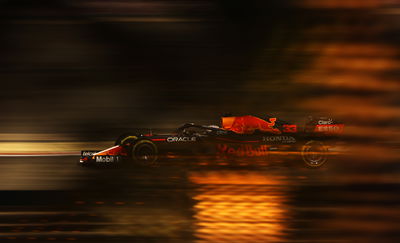
Its work put it on the right path for the development of its 2021 car, and when its updated RB16B ran faultlessly and appeared both fast and very stable to drive in pre-season testing, there were promising signs that Red Bull had successfully eradicated its biggest weakness. Conversely, Mercedes’ W12 looked to have gone the other way, with Lewis Hamilton and Valtteri Bottas struggling to tame their latest machine.
Verstappen capitalised on his strong package to translate Red Bull’s promising form into the season-opener and ensure the team hit the ground running in qualifying in Bahrain.
Significant gains made by Honda
Another factor in Red Bull’s performance gains comes from Honda’s efforts to bring forward the development of a power unit originally intended for 2022 by a year for what will mark its final season in F1.
The Japanese manufacturer has left no stone unturned in its renewed bid to help Red Bull clinch a first world championship title since 2013, and the gains it has been able to make have been significant.
Ahead of qualifying, AlphaTauri boss Franz Tost expressed his delight at the job done by Honda, saying its latest power unit had put it “very, very close” to Mercedes’ class-leading engine that has dominated the V6 turbo-charged era.
Verstappen went on to give Honda its first pole position at a season-opener since Ayrton Senna put his McLaren on pole at Phoenix in 1991, while AlphaTauri’s Pierre Gasly ensured there were two Honda-powered cars inside the top-five.
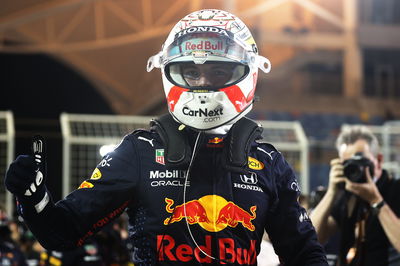
The Dutchman hailed Honda’s effort its most impressive yet, adding: “That doesn’t mean that the previous years it wasn’t impressive. I think their turnaround has been very good, and their understanding of the engine is impressive.
“And it’s really enjoyable to work with them as well, they’re really passionate and emotional, which I like. They’re just flat-out, all the time. They want to win. And you can really see that. Big credit to them also for the result today. They had a great winter.”
Mercedes has admitted to having an early power unit deficit and after years of well-documented struggles, Honda, with its new compact design and upgraded unit, now appears to boast the best engine in F1.
Mercedes lose more from rules change
Despite car development being restricted over the winter as part of cost-saving measures introduced by F1 in the wake of the coronavirus pandemic, one key rules change to the rear area of the floor appears to have hurt Mercedes more than its rivals.
In an attempt to cut downforce levels by up to 10% compared to 2020, a diagonal section of the floor has been cut away, in addition to changes to the diffuser fences and winglets on the rear brake ducts.
Mercedes’ struggles with rear handling of its W12 in winter testing - including a pair of low-speed spins for Hamilton - led to suggestions that the team’s low-rake aerodynamic concept was losing out more compared to the high-rake approach which Red Bull has favoured for much of the last decade.
On Friday, Wolff revealed Mercedes’ analysis pointed to this being the case as he admitted the German manufacturer was now stuck with the philosophy for the rest of the season. Mirroring Mercedes’ lower-rake concept, Aston Martin has also been one of the team’s whose performance appears to have taken a hit as a result of the rule changes.
After getting the maximum out of his W12 in qualifying with a lap time that was over two seconds slower than his pole position in Bahrain effort just four months ago, Hamilton insisted it was “no secret” that the rear-floor regulation changes had been intended to cut Mercedes’ performance advantage and influence the pecking order.
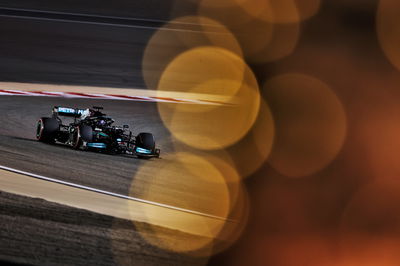
Asked about Wolff’s comments, Hamilton replied: “I mean it’s no secret that the changes, of course they’ve been done to peg us back. We had the changes of course last year to our engine to do the same thing.
“But that's OK, we love a challenge and we don't look down on these things, we just work hard to do the best we can. And that's what we'll do.”
Can Mercedes fight back in the race?
Hamilton remained largely upbeat about the situation despite his heavy qualifying defeat, revealing that Mercedes had expected its deficit to Red Bull to be closer to a second based on its pre-season testing performance.
While Red Bull is a step ahead of Mercedes on pure pace, Friday’s long-run averages suggest that things were pretty nip-and-tuck between the two teams, with Verstappen holding a marginal advantage over Hamilton - even if the latter expects Red Bull to have around two-tenths in hand over his side.
Despite the disappointing gap to pole, Mercedes trackside operations director Andrew Shovlin is hopeful the team can be competitive in the race and take advantage of having two cars in the fight against the sole Red Bull of Verstappen, with his teammate Sergio Perez starting an underwhelming 11th.
“It’s hard to read where we are on race pace from the Friday long runs as we didn’t land the car in the right window but we’re fairly confident we’ve improved the rear grip so it will be less of a handful in the race.
“We might not be on pole but we have two cars at the front and an extra set of the hard tyres, so hopefully we can create some opportunities from that.”
Qualifying has set up a mouth-watering prospect of a proper fight between Verstappen and Hamilton in the race. All eyes will be fixated on what could be a breathtaking duel down to Turn 1.
